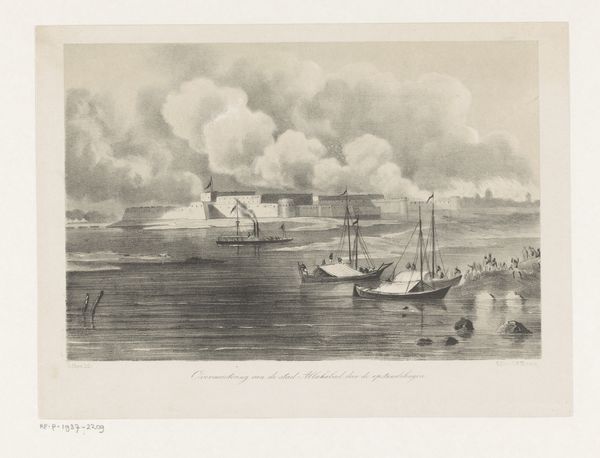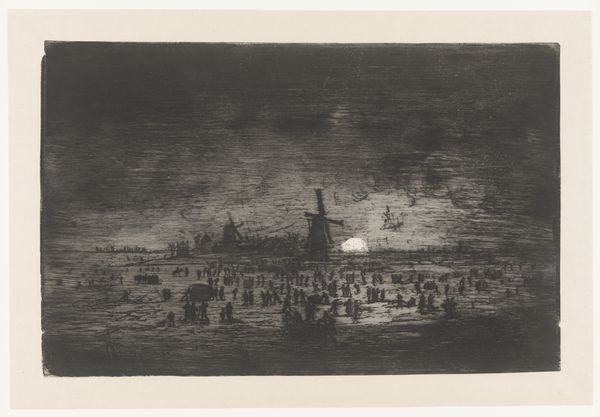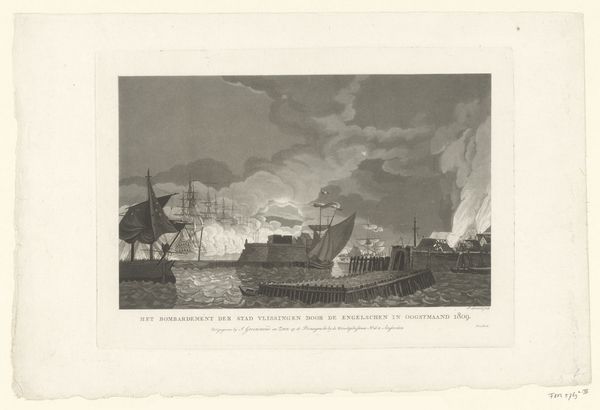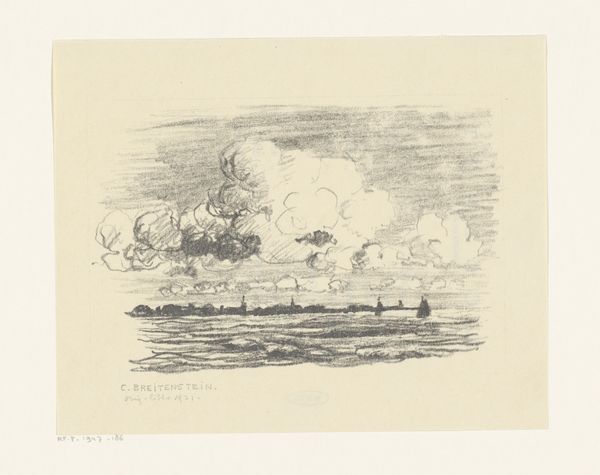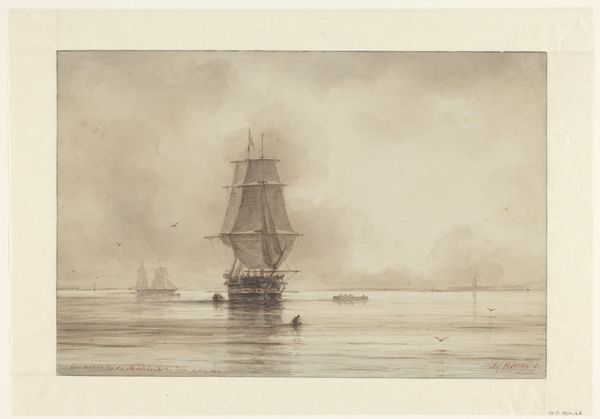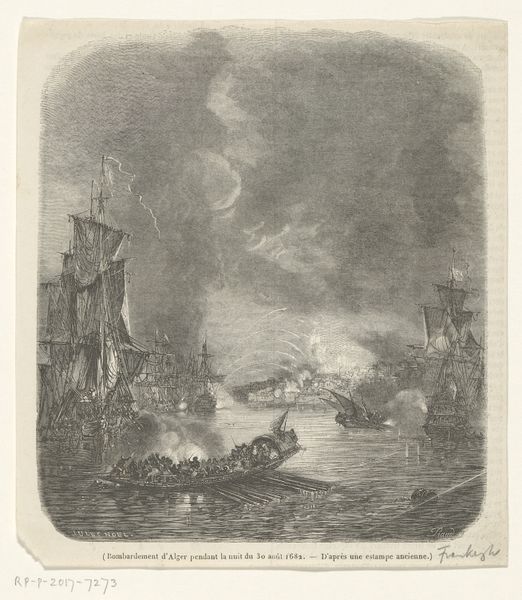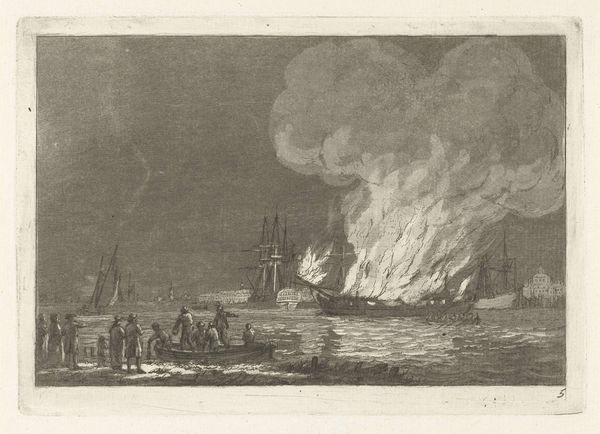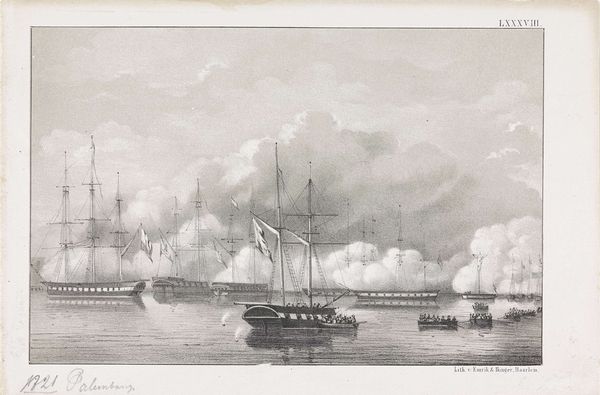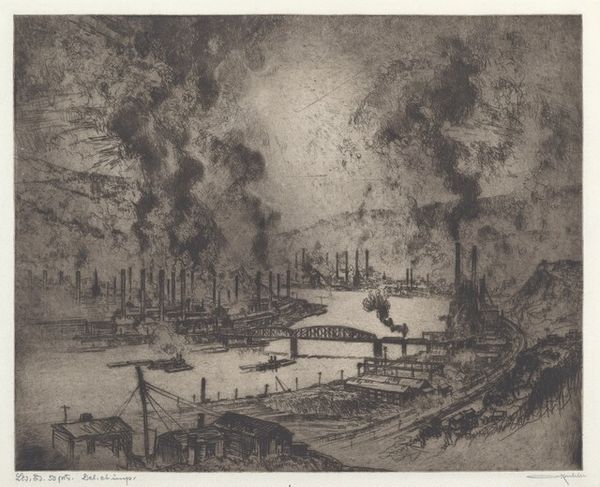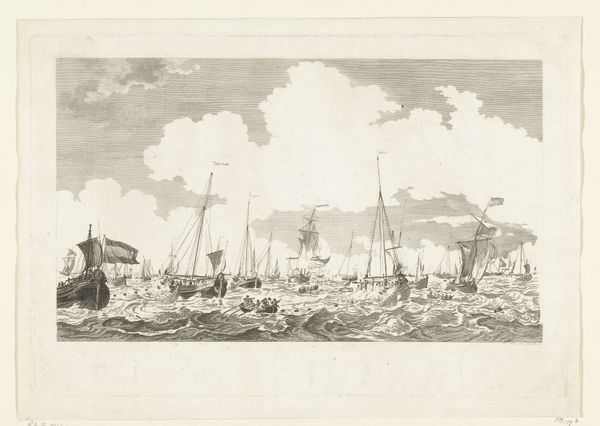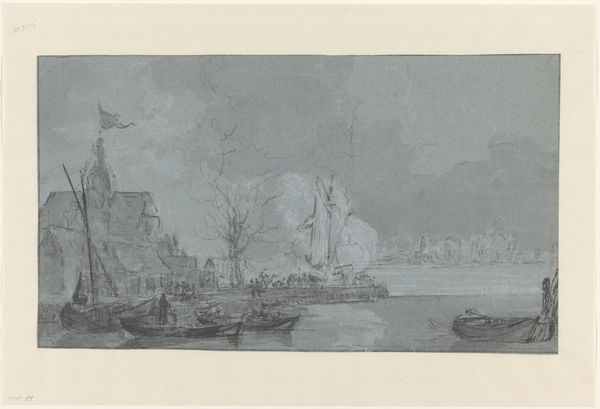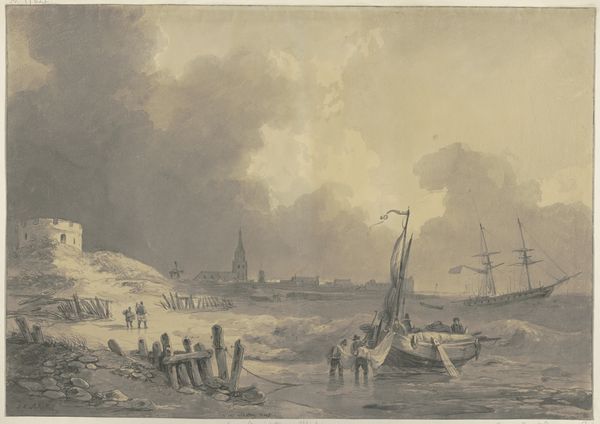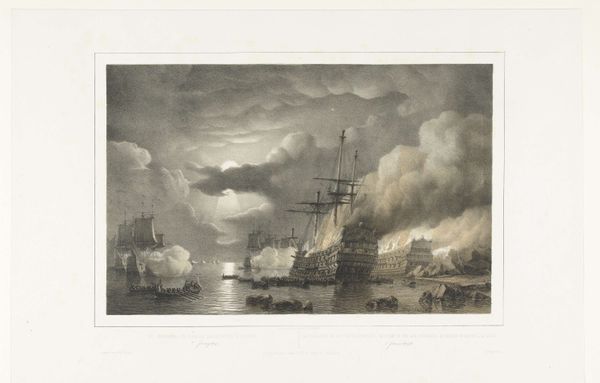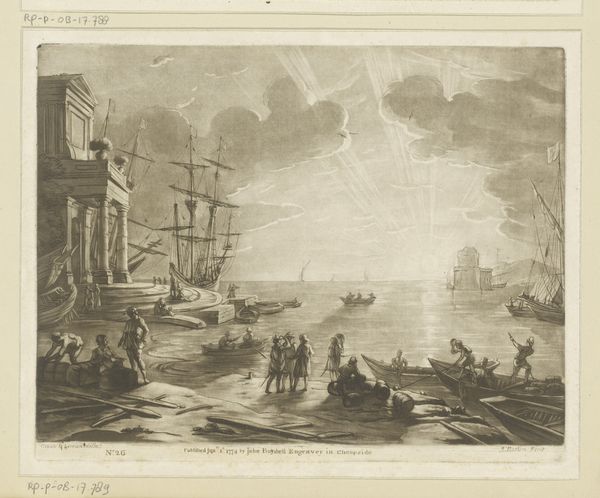
drawing, ink
#
drawing
#
baroque
#
landscape
#
ink
#
watercolor
Dimensions: height 264 mm, width 438 mm
Copyright: Rijks Museum: Open Domain
Curator: Looking at this drawing by Jacob Esselens, dating from 1697, entitled "Bonfires on the General Thanksgiving for the Peace of Rijswijk," the first thing that strikes me is its overwhelming greyscale palette. It feels somber. Editor: Somber is an interesting word choice, especially for a work celebrating peace! Though monochromatic, I see so much bustling activity represented by the delicate use of ink and watercolor. Considering the historical context—the end of the Nine Years' War—perhaps Esselens aimed to depict the restrained jubilation of a nation emerging from prolonged conflict. The materials here, ink and watercolor on paper, suggest an immediacy, like a quick, documentary sketch rather than a polished, celebratory painting for the elite. Curator: That's an interesting take. To me, it’s the strategic deployment of light against the darker washes that suggests so much depth despite the modest materials. Observe the way he's captured the luminosity of the bonfires reflected on the water’s surface – masterful technique that makes one forget that the artist's hand shapes the narrative just as much as historical context. The paper itself, and the evidence of drawing over painting implies a more thoughtful and involved artistic labor than merely recording events. Editor: I wonder how accessible these celebrations of peace were to different classes? It looks quite spectacular, judging from the amount of boats and general turnout in the artwork. Surely, there were some groups still marginalized or devastated by war's impact, making universal joy an unlikely scenario, and suggesting this piece potentially serves the powers involved with the peace treaty. How did they produce those dazzling pyrotechnics? Did they hire entire guilds or employ new workers? Curator: We could research guild records and city expenditures for thanksgiving to illuminate where materials were acquired, and explore economic relationships that sustained this artistic work. I do note the intricate detailing of ships and the architectural backdrop indicating Esselens' mastery over draftsmanship as a highly valued skill at that time. Editor: That is indeed valuable knowledge, especially to understand social structures and to acknowledge unsung contributions behind what may seem as fleeting celebrations. Considering that a major war just ended, its legacy probably endured far longer, disproportionately affecting specific groups, especially marginalized populations. These peace narratives frequently neglect to foreground experiences beyond upper classes, even those of the labor required to celebrate it. Curator: The more we examine this scene of public jubilation rendered through layers of diluted ink on humble paper, the more layers it exposes. I hadn’t considered the work that went into it this deeply. Editor: Absolutely. And for me, remembering how power dynamics shift during wars—who profits and who suffers—adds to the artwork’s story that cannot be extracted from materiality alone.
Comments
No comments
Be the first to comment and join the conversation on the ultimate creative platform.
